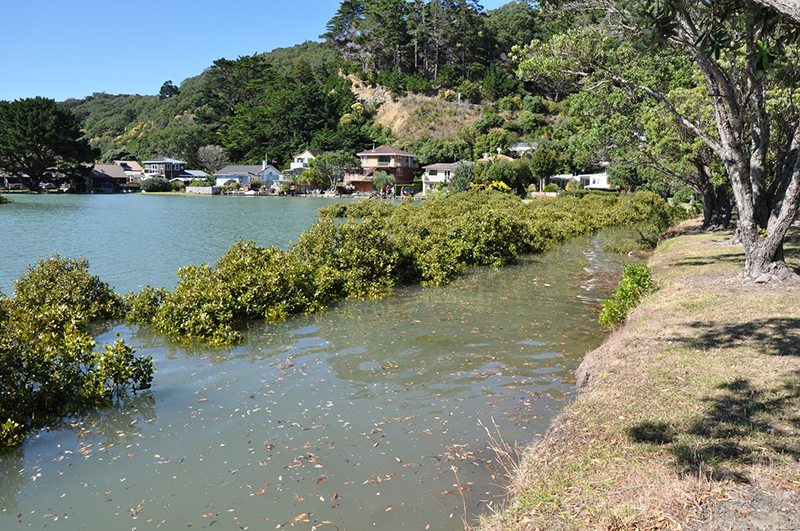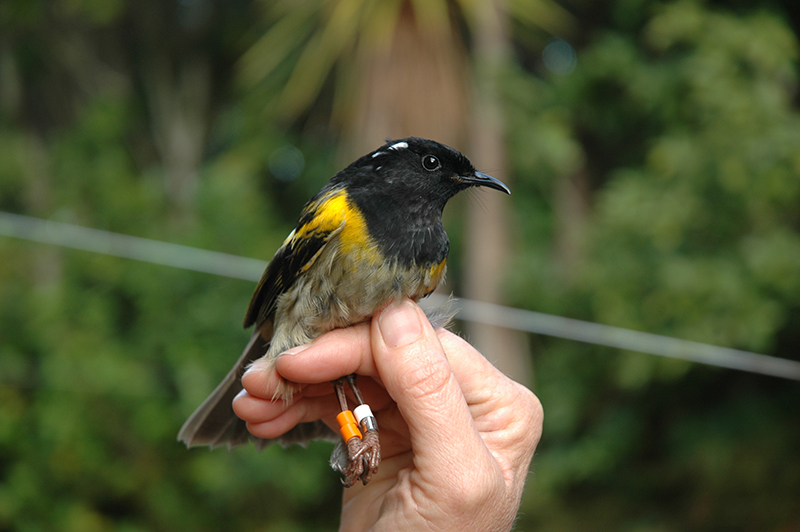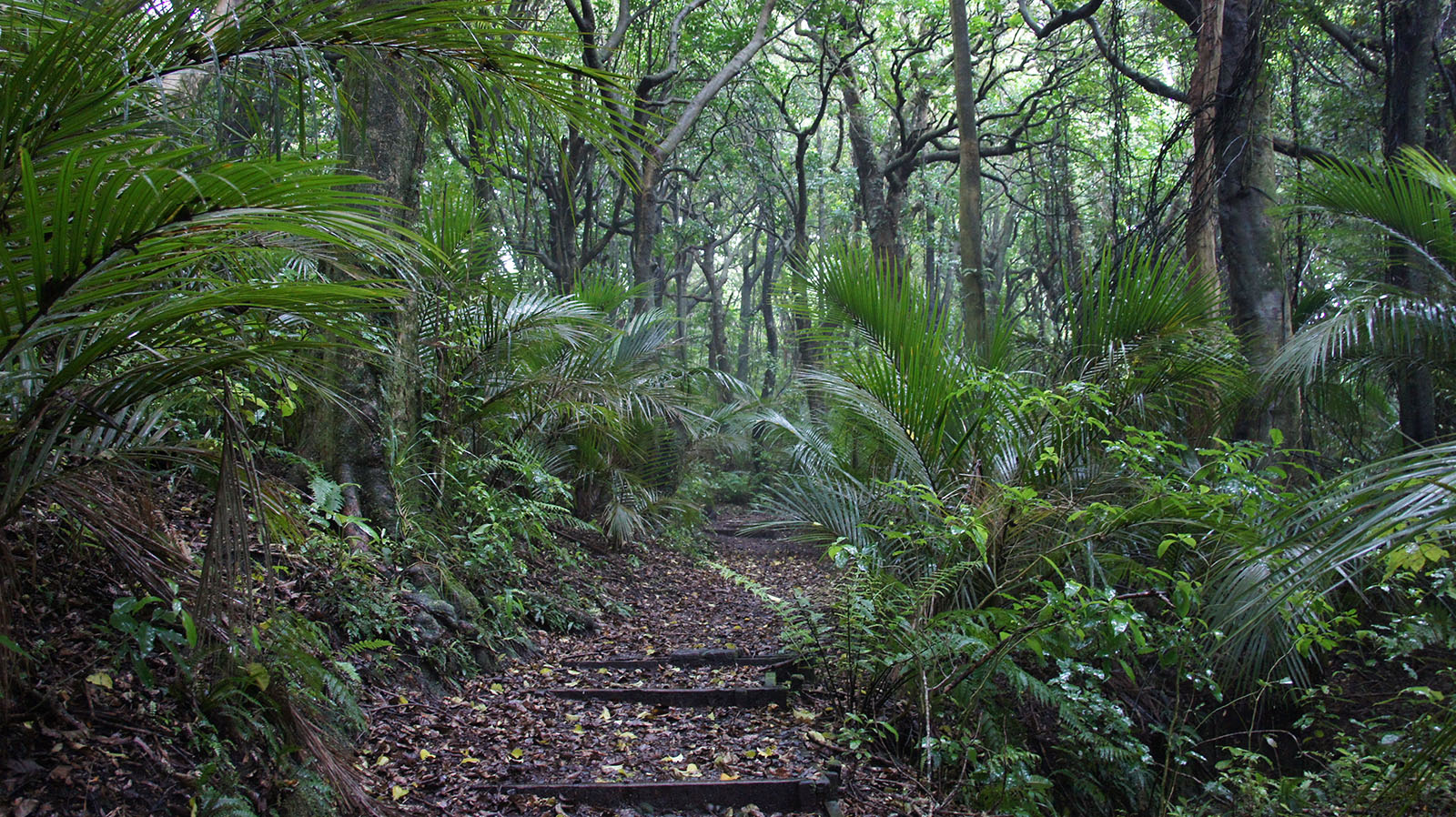National environmental reporting has been in the news over recent months with the release of Environment Aotearoa, our second ever national State of the Environment report, and its subsequent review by the Parliamentary Commissioner for the Environment’s (PCE). Environmental reporting matters and has many implications for how we all live day to day. We explore here why it is so important and how we can and should improve the description and evaluation of environmental trends in New Zealand.
Why environmental reporting matters
Practically speaking, the state of the environment has consequences for every individual. Air pollution and water pollution makes people sick and sometimes kills them (e.g. in 2012, 1000 people died prematurely in New Zealand as a result of air pollution). Excess sediment degrades marine ecosystems, making it pretty hard to catch a fish for dinner in some parts of the country. Excess nutrients and bacteria like E. coli in our rivers can mean you risk illness if you go there for a swim. We need to know how many of our aquifers are becoming polluted and where water is likely to become unfit to drink. Knowing what’s happening with our climate is also key to how we plan and develop our settlements and transport systems. We need to know how fast sea level is rising and where dwellings are likely to become uninhabitable in ten, twenty or fifty years. And of course pollution, the spread of pests and weeds and habitat destruction all impact on the plants and animals that call New Zealand home.
A solid and dependable system must tell us what we need to know when we need to know it, so changes can be made in time to avert bad outcomes and refine approaches to better deliver the good outcomes we want. Without this information we’ll find it very hard to hold our public agencies to account for their responsibilities of protecting the public interest in maintaining a healthy environment, and to hold private interests to account for any environmental damage they may cause.

Environmental reporting is improving in theory…
New Zealand has a patchy history of environmental monitoring and reporting, and we’ve been criticised internationally several times for defects, including by the OECD. In 2007, there was an omission of a vital chapter of that year’s environmental report. Chapter 13 was quietly reintroduced to the draft after eagle-eyed Russel Norman MP queried its disappearance in Parliament. This event bolstered calls for more systematic, independent and mandatory regime to replace the existing non-statutory discretionary basis for environmental reporting.
In 2010, PCE Jan Wright released a report making three recommendations to the Minister for the Environment regarding environmental reporting:
- draft legislation that assigns roles and responsibilities for regular reporting on the state of the environment to different public entities
- ensure that indicators for assessing the state of the environment are reviewed, the underlying environmental statistics are significantly improved, and primary data is made publicly available on the internet
- assign the responsibility for state of the environment reporting to an agency or agencies that can provide the required independence and technical capacity.
Some time passed and the Environmental Reporting Act 2015 was born, granting the job of environmental monitoring and reporting to a joint team from the Ministry for the Environment and Statistics New Zealand. The rationale was that the combination of science and policy expertise in the Ministry and the mathematical credibility of StatsNZ would enable credible reporting. An oversight role for the Parliamentary Commissioner for the Environment was also provided for.
In 2014, the agencies released their first Air Domain report. The PCE duly released a review. The PCE identified a range of problems, including the use of inappropriate metrics. In particular, she noted that reporting on large airborne particles that have little impact on health was not particularly relevant and therefore the reporting was not as helpful as it should be. Reporting air quality, she argued, should focus on small particles that have serious detrimental impacts on human health. Basically she demonstrated that we had some way to go before the reporting was as robust and useful as it needed to be.
…but in practice, implementation is patchy
In October 2015 the big kahuna was released, the first full state of the environment report in 9 years: Environment Aotearoa and the first ever mandatory report. The report presented a range of data on the state of the environment, but stopped short of prioritizing those things we should be most concerned about. There was no indication of consequences for either people, or New Zealand’s other organisms (animals and plants) from the continuation of trends observed. There was no mention of how increasing concentrations of greenhouse gases, increasing nitrogen pollution, and ongoing destruction of habitat for native plants and animals might impact the life supporting capacity of NZ for its various human and non-human inhabitants.
Consequently, the PCE review was more critical this time. The review commended the Ministry for bringing the report together within limited time and with even more limited data. But the manner in which some data were treated raised eyebrows, as did the language concerning human-induced global warming that was suggestive of a lack of scientific expertise. The PCE’s call for a focus on data relevance was perhaps the most significant. The selection of data presented and the form of its presentation were not sufficiently relevant to identify the most pressing environmental issues and the most damaging policy failures.
NIWA has 77 freshwater monitoring sites around the country: about half are lowland sites and the rest in the backcountry where there is very little upstream catchment modification. The backcountry sites are located and designed to be provide ‘control’ data, showing the state of rivers where there is little human activity. Those in the lowlands are sited to reveal the impacts of human activities. The Ministry has often used these data to convey a sense of the extent of degradation, somewhat overlooking that a significant proportion of these sites were pristine control sites, and thus understating the true extent of lowland water quality degradation (i.e. all lowland sites showed significant water quality declines). Reporting like this disguises a policy problem and dampens compulsion to act. Several years ago the Ministry for the Environment came under fire from prominent freshwater advocate and academic Mike Joy for this. Now despite his very public critiques, exactly the same mistake has been made in Environment Aotearoa. This must not happen again! The Ministry must erase all suspicion that it prefers to report on our most serious environmental problems in ways that favour politically powerful interests over the public interest. The public needs to know what the problems are, where they occur, how significant they are now, and how this might change if present trends continue.
Over time we’d expect to see an overall increase in the amount and breadth of data to draw upon, more investment into assembling the right information to answer the right questions, and ongoing refinements in how those data are used or treated. In particular, we need good contextual information so that we can understand how important the changes observed might be and what issues are most urgent to address. The contextual information provided must be sufficient to show whether environmental issues are becoming more or less significant for both people and native biodiversity over time. It should allow for the ready identification of the parts of the country where an issue is currently significant and where it is not. Understanding the significance of an issue requires maps, trends over time, and credible consideration of the consequences of these issues for people and other life forms. These are the critical components of contextual information that must comprise environmental reporting.
But there are some potential barriers that we need to be conscious of.
We must fund better monitoring
Funding levels and resources necessary to assemble relevant information are set by political decisions. We therefore need political leadership that assures commitment to adequately resource for the collection of adequate and relevant environmental data. Otherwise those who benefit from degrading the environment at the expense of the public will be free to continue doing so, due to the insufficient knowledge of the impacts of their activities.
Data collection generally – although not always – has a significant cost associated with it. While agency staff might recognise the need to know certain information, they may lack the funding to enable its collection, or the expertise to do it. A good example of this is the regional councils ‘Bio-indicators’ project. This project has developed 18 indicators for biodiversity monitoring (e.g. compliance with vegetation clearing controls). These are intended to be rolled out at various speeds and scales around the country, to move toward a consistent national scale dataset on key issues.
A serious constraint on this programme is capacity and funding at an agency level that will limit its implementation. There remains significant opportunity for the Ministry for the Environment to provide energy and leadership here, particularly in the context of the Environmental Reporting Act 2015. The scale and depth of monitoring required is rarely commensurate with size of rating base, poorer areas sometimes need the most investment and have the lowest capacity. To enable this programme to be effectively implemented, more funding is certainly needed. One potential solution is an environmental monitoring equivalent of Envirolink. Envirolink is a research fund for smaller councils, but which does not fund implementation and monitoring.
Availability of independent expertise to determine appropriate data to rely on
In any gaggle of experts on a particular topic, there will always be some level of disagreement. Science is inherently uncertain: largely based on testing and replacing current ideas and at any one time competing views may exist. These aspects of science can frustrate policy makers and so scientists are often prevented from providing guidance (definitive or otherwise) on the best measures to use in many cases. It gets even more challenging when some scientists themselves are captured by vested interests and develop inappropriate arguments against metrics.
Identifying the right data to rely on and presenting them to reveal the real story requires independence from both political and vested interests. The reviews provided by the PCE are a great help in this regard, but may not be sufficiently detailed to identify important failures. The PCE picked up on the lumping of control and impact sites for freshwater monitoring (discussed earlier). But there were further examples of failures to report. For example, on the extensive loss of non-forest habitat that is damaging native biodiversity and landscapes in the inland South Island. This was obscured by an inappropriate lumping of grassland cover classes: native classes that are critical habitat for threatened native species were not distinguished from the wholly-exotic dairy pasture they are being turned into, so no change was reported. By the time the first land domain report comes round, the affected habitats and species may be completely gone.

Turning information into action
Environmental data can reveal where the key threats to particular environmental values are coming from. Some parties may find such information inconvenient and act to restrict its availability. For example, in a region where forestry is a dominant activity and sedimentation/slash dumping in waterways is shown to be a serious problem, pressure from vested and associated political interests might stop that information from being widely shared or prevent the problem being properly responded to. Large-scale dumping at sea of unwanted fish catch is a current example. MPI has refused to release video information and the public has no assurance that the issue is being adequately addressed.
At a national level, recognising the policy implications of data can be equally awkward. The omission of “Chapter 13” as discussed previously is such an example. The information within “Chapter 13”, which concluded, among other things that intensive agriculture was our most serious – and growing – driver of freshwater decline nationally, was perhaps seen as too inconvenient to include.
The PCEs final recommendation was that the Secretary for the Environment should prepare a policy response report that outlines priorities for action after each environmental domain and synthesis report is produced. Implementing this recommendation is crucial to choosing the right policy approach to tackle new and ongoing issues. It should also be a key mechanism for holding our politicians and public agencies to account for addressing identified environmental problems on our collective behalf, regardless of which special interests they discomfort.
So where are we at?
We finally have a mandatory regime (a big step forward) which now allows access, via a web portal to all the raw data which the Ministry and StatsNZ have relied on. The recommendations from the PCE will also help to improve the regime if they’re implemented. But government still needs to inject further information, analysis and rigour into the regime and to effectively respond to what those data tell us. That will rely on political decisions and the political will to make them. In the absence of these improvements, it is likely that national environmental reporting will continue to be unduly influenced by current political narratives and further enable economic interests to trump those of the public and the health of the environment.
The authors would like to thank Geoff Simmons (Morgan Foundation) and Anton van Helden (Forest & Bird) for their helpful comments in the preparation of this article
Photo credits –Taranaki temperate rainforest (Catherine Kirby) and Stitchbird and Waiwera estuarine ecosystem (both by Manu Bird)




Leave a comment